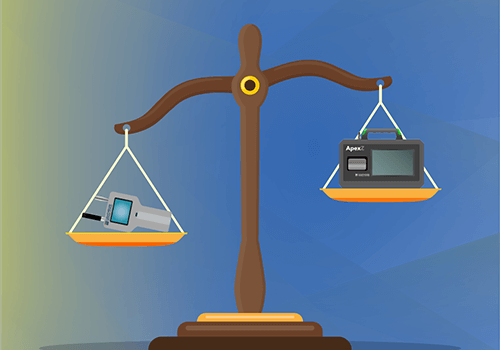Environmental Monitoring Systems (EMSs) are important and hefty investments that require typically large amounts of infrastructure; however, modern EMSs are becoming nimble, adaptable, and slimmer. There are so many options and factors that go into making this decision, so where exactly should you start?
Here at LWS, we specialize in helping manufacturers make educated decisions for the best possible environmental safety. Today, we are going to break down 6 steps to choosing your environmental monitoring system for aseptic manufacturing to make this as easy as possible.
1. Be Aware of Limits According to Pertinent Regulations
First things first, you need to know which regulations apply to your process, product, cleanroom classification, and instruments. Determining which regulations you must follow will give you a good understanding of what you need to identify in an EMS.
If you need to measure particles of a certain size for your cleanroom classification, then your EMS’s particle counter needs to be able to identify particles down to that size.
Likewise, if your product needs to meet certain criteria and certifications, you should choose an EMS that is designed with those regulations and requirements in mind.
This involves having a deep understanding of your process and industry, which will come into play for the next step: conducting a thorough risk assessment.
2. Conduct A Thorough Risk Assessment
This is where you will put your knowledge to the test. You need to conduct a thorough risk assessment to establish a comprehensive environmental monitoring program. This assessment should be based on detailed knowledge of:
- process inputs,
- final product,
- facility,
- equipment,
- specific processes,
- operations,
- historical monitoring data,
- qualification data,
- and other relevant information.
You need to set alert levels and action limits for viable and non-viable particle monitoring for every stage of production, including set-up, production, and clean-up. For maximum safety, it is critical to ensure you have regular, continuous access to information and feedback during every process. Thus, your risk assessment should look at the whole process, including these times.
Updates to GMP Annex 1 show an emphasis on using a risk based approach to develop your cleanroom and EMS. It also puts extra importance on using the personnel knowledge behind the process to make it as customized as possible.
When you put your process knowledge into your risk assessment, you can develop a detailed understanding of:
- What risks are most likely to occur,
- Where they are most likely to occur,
- What parts of the process are most susceptible to contamination,
- And what risks are most dangerous.
This understanding will help you choose an EMS that best meets your needs.
3. Identify How It Fits Into Your Current Processes
As you develop an understanding of your process for the risk assessment, you should also consider how you gather and store information and data. Are these processes working? Can they be streamlined? What software do you use? Do you like the software? What SOPs do you have in place?
While you will most likely have to adapt some processes when you implement a new EMS, you should look for one that is as adaptable as possible. The less change, the easier it will be to implement it into your organization.
4. Look For Flexibility And Scalability
Moreover, adaptability in an EMS lends itself to flexibility and scalability. Because of the size of this investment, you will not want to be back here in a few years, looking for a new EMS to meet your expanded needs. Have you heard the saying, “buy once, cry once”? While adaptable and flexible EMSs might be more expensive than other options, they can grow with you so you do need to make a big purchase and adaptation again in the near future.
So ask yourself the following questions:
- Do we have scalable processes in place?
- Where is this organization going?
- In what directions are we growing?
- What will serve us best as we grow?
Consider that growth as you choose an EMS.
5. Determine Level of User Friendliness You Need
Different organizations have varying levels of needs for user friendliness, although a good rule of thumb is to keep it as simple as possible. Thus, look for an EMS with excellent user friendliness. At varying times, you might need to change SOPs, limits, or clean zones. Talk to the vendor and ask for a demonstration to see how easy it is to change those things or other applicable applications.
6. Research Vendor Options
Speaking of vendors, do your research into the vendor you are choosing. What is their track record? Where are they going? Do they offer service agreements? What are their reviews? Do they have aftermarket support? What level of involvement will they take in helping you choose your EMS?
Your vendor will make or break your EMS purchasing, installation, and use experience. They should be experts on clean air, their products, your needs, regulations, and the industry in general. They should be your greatest resource.
So when you’re shopping for an EMS, also interview the vendor. If you have an interaction with a vendor that leaves you feeling unfulfilled or unsatisfied, then do not saddle yourself with them for this whole process and ongoing support.
Here at LWS, we firmly believe that your vendor experience is crucial. That is why we offer comprehensive customer service, installation, and general help, as well as easy-to-read user manuals and video breakdowns in our free Knowledge Center.
You can start accessing our Knowledge Center today! Just make a free account to get started.


